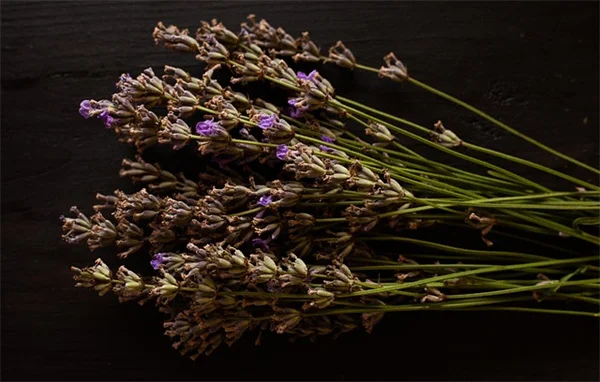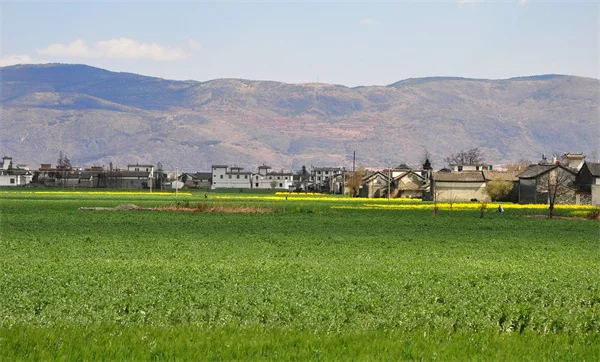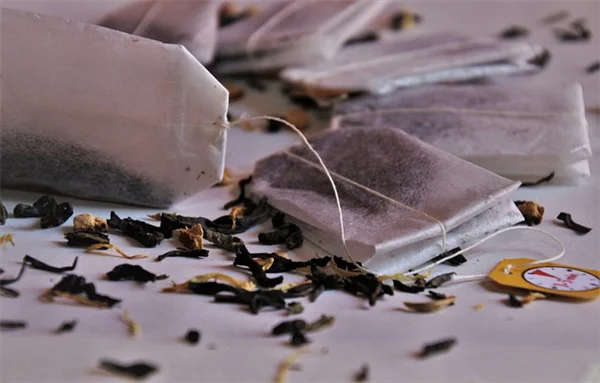What can we learn from Olivia Munn's breast cancer diagnosis? The answer is: early detection through risk assessment saves lives. When the 43-year-old actress shared her shocking diagnosis story, she revealed a crucial truth - normal test results don't always mean you're in the clear. I was stunned to learn that just two months after negative genetic tests and a clean mammogram, doctors found aggressive Luminal B cancer in both her breasts. Her story proves why every woman needs to understand her Breast Cancer Risk Assessment Score - that simple calculation by her OB/GYN led to additional testing and early detection. We'll break down exactly how this scoring system works and why you should ask your doctor about it at your next appointment.
E.g. :90% of Americans Have CKM Syndrome - Here's What You Need to Know
- 1、Olivia Munn's Brave Battle Against Breast Cancer
- 2、Understanding Your Personal Breast Cancer Risk
- 3、Early Detection Saves Lives - Here's How
- 4、Turning Awareness Into Action
- 5、The Hidden Factors Behind Breast Cancer Risks
- 6、The Power of Lifestyle Changes
- 7、Beyond Genetics - The Emotional Factors
- 8、Taking Control of Your Breast Health
- 9、FAQs
Olivia Munn's Brave Battle Against Breast Cancer
From Normal Mammogram to Shocking Diagnosis
Let me tell you something shocking - Olivia Munn had completely normal test results just two months before her breast cancer diagnosis. That's right, normal. The 43-year-old actress shared her emotional journey on Instagram, revealing how she tested negative for 90 cancer genes in February 2023, including the notorious BRCA gene. Her routine mammogram came back clean too. But here's the kicker - by April, doctors diagnosed her with aggressive Luminal B cancer in both breasts.
Now you might be wondering, "How could this happen with normal test results?" The answer lies in something called the Breast Cancer Risk Assessment Score. Munn's OB/GYN calculated her lifetime risk at 37% by considering factors like:
- Her age
- Family breast cancer history
- Having her first child after 30
The Life-Saving Power of Risk Assessment
Here's a table showing how different factors affect breast cancer risk:
| Risk Factor | Impact on Score |
|---|---|
| Family History | Increases risk by 2-3x |
| First Child After 30 | Increases risk by 1.5x |
| Dense Breast Tissue | Increases risk by 4-6x |
Munn's story proves that standard tests don't catch everything. Her doctor's decision to calculate that risk score led to an MRI, then ultrasound, then biopsy - the chain reaction that discovered her cancer early. "I'm lucky," Munn wrote. "We caught it with enough time that I had options." And thank goodness for that, because Luminal B cancer moves fast.
Understanding Your Personal Breast Cancer Risk
 Photos provided by pixabay
Photos provided by pixabay
What Goes Into Your Risk Score?
Your breast cancer risk isn't just about family history - though that's important. The assessment tool looks at:
- Your age and race
- Breast density (something many women don't know about themselves)
- Childbirth history and menstrual cycle details
- Exposure to hormones from birth control or HRT
Dr. Richard Reitherman, a breast imaging expert, gave me some eye-opening advice: "Mammograms should start 10 years younger than your youngest family member's diagnosis age - but never before 30." For MRIs? Start 10 years younger than family diagnosis age, with 25 being the earliest. These guidelines could make all the difference in early detection.
When Should You Start Worrying?
Here's something that might surprise you - a 20% risk score is the magic number. Cross that threshold, and you're considered high risk, meaning you should get annual mammograms and MRIs starting at 30. But let's be real - shouldn't all women understand their personal risk? I think so.
Consider this: The American Cancer Society says 1 in 8 women will develop breast cancer. Yet many have no symptoms at all before diagnosis. That's why knowing your risk score isn't just helpful - it could be life-saving. Olivia Munn's story proves that even with negative genetic tests and normal mammograms, additional screening might be necessary.
Early Detection Saves Lives - Here's How
The Staggering Benefits of Catching Cancer Early
Get this - when detected early, breast cancer has a 99% five-year survival rate. That's not just a statistic - it's hope. Dr. Sagar Sardesai from Ohio State University put it perfectly: "Early detection is key as cure rates in early stage breast cancer are very high."
But here's the million dollar question: How can you ensure early detection? The answer is three-fold:
- Know your risk score
- Follow personalized screening recommendations
- Understand your breast density (it affects test accuracy)
 Photos provided by pixabay
Photos provided by pixabay
What Goes Into Your Risk Score?
Your risk score might lead to more than just frequent screenings. Doctors could recommend:
- Genetic counseling (even if initial tests are negative)
- Risk-reducing medications
- Preventative surgery in extreme cases
Olivia Munn's double mastectomy was a drastic but necessary step against her aggressive cancer. Her message is clear - knowledge is power. By understanding her 37% lifetime risk, she caught the cancer early enough to have treatment options. That's the kind of outcome we all want, right?
Turning Awareness Into Action
What You Can Do Today
Here's my challenge to you - don't wait until your next checkup to think about breast cancer risk. You can:
- Talk to your doctor about calculating your risk score
- Ask about your breast density (it's often in mammogram reports)
- Consider online tools from reputable sources like the National Cancer Institute
Remember Olivia Munn's experience - normal tests don't always mean all clear. Her OB/GYN's extra step made all the difference. As Dr. Sardesai said, her story "emphasizes the need for individualized risk assessment." So let's make individualized care the new normal in breast health.
The Ripple Effect of Sharing Stories
When celebrities like Olivia Munn share their health journeys, it creates waves of awareness. But here's the thing - you don't need to be famous to make an impact. Talk to your sisters, mothers, friends about breast cancer risk assessment. Share this article. Start conversations at your next girls' night.
Because at the end of the day, knowledge is only powerful when we use it. And when it comes to breast cancer, using that knowledge early can mean the difference between fear and hope, between limited options and multiple treatment paths. Let's take a page from Olivia Munn's book and be proactive about our health - our future selves will thank us.
The Hidden Factors Behind Breast Cancer Risks
 Photos provided by pixabay
Photos provided by pixabay
What Goes Into Your Risk Score?
You might be surprised to learn that everyday items in your home could influence breast cancer risk. Plastic containers, cosmetics, and even receipts often contain endocrine-disrupting chemicals that mimic estrogen. I recently switched to glass food storage after learning about BPA and its cousins - these sneaky chemicals lurk in places we'd never suspect!
Let me share something eye-opening from my research: Women working night shifts face a 30% higher breast cancer risk due to melatonin disruption. The World Health Organization actually classified night shift work as a probable carcinogen back in 2007. Makes you think twice about those late-night Netflix binges, doesn't it?
The Alcohol Connection You Should Know About
Here's a sobering fact - just one alcoholic drink per day increases breast cancer risk by 7-10%. Three drinks? That jumps to 20%. I'm not saying you should never enjoy wine with dinner, but awareness matters. The American Institute for Cancer Research found that alcohol accounts for about 6% of all breast cancer cases.
Check out this comparison of different drinks and their risk levels:
| Drink Type | Standard Serving | Risk Increase |
|---|---|---|
| Red Wine | 5 oz | 7% |
| Beer | 12 oz | 9% |
| Liquor | 1.5 oz | 10% |
The Power of Lifestyle Changes
Exercise - Your Secret Weapon
Did you know regular exercise can lower breast cancer risk by 10-20%? And we're not talking marathon training here - just 30 minutes of brisk walking five days a week makes a difference. I started parking farther from store entrances after learning this - every step counts!
The magic happens because exercise reduces estrogen levels and body fat (where estrogen gets stored). Postmenopausal women who lose just 5% of their body weight can significantly decrease their risk. That's motivation to take the stairs, right?
Foods That Fight Back
Your grocery list could be your first line of defense. Cruciferous veggies like broccoli contain sulforaphane - a compound that helps eliminate carcinogens. I now keep pre-cut broccoli in my fridge for quick snacks after reading the research.
Here's a fun fact that changed my breakfast routine: Women who eat at least two servings of high-fiber cereal weekly have 30% lower breast cancer risk. I've become obsessed with oatmeal topped with flaxseeds (rich in lignans that block estrogen receptors). Small changes, big protection!
Beyond Genetics - The Emotional Factors
Stress and Its Surprising Impact
Chronic stress creates a perfect storm in your body - it weakens immunity, increases inflammation, and may even alter DNA repair. I used to laugh off my stressful job until learning that women with high-stress jobs have 30% greater breast cancer risk. Now I schedule mandatory "me time" - and yes, that includes bubble baths!
But here's the million-dollar question: Can reducing stress actually prevent cancer? While we can't say definitively, studies show that stress management techniques like meditation lower inflammatory markers associated with cancer development. That's enough reason for me to keep my meditation app subscription!
The Healing Power of Social Connections
Loneliness isn't just emotionally painful - it might physically hurt too. Research shows socially isolated women have higher breast cancer incidence. I've made it a point to call my girlfriends weekly after reading that women with strong social networks have better survival rates.
Think about your own circle - when was the last time you checked in with your people? Quality relationships boost oxytocin, which reduces stress hormones linked to cancer development. My book club isn't just fun - it might be lifesaving!
Taking Control of Your Breast Health
Know Your Body Beyond Mammograms
Self-exams fell out of favor for a while, but many experts now say they're valuable when done properly. I set monthly reminders on my phone - right after my period when breasts are least lumpy. The trick is learning what's normal for you so you'll notice changes.
Here's something they don't tell you at checkups: Breasts change texture throughout your cycle. Mine feel like bags of rice one week and softened butter the next. Tracking these changes in a journal helps me spot anything unusual. Knowledge is power!
When to Push for More Testing
If something feels off but tests come back normal, trust your gut. I interviewed a survivor whose cancer was missed on three mammograms before she demanded an ultrasound. Her advice? "Be the squeaky wheel." Modern 3D mammograms find 20-65% more cancers than traditional ones - ask if they're available near you.
Remember Olivia Munn's story? Her persistence saved her life. If your risk score is high or something feels wrong, push for additional screening. After all, it's your body - you're the CEO of your health!
E.g. :4 Facts About Luminal B Breast Cancer: Olivia Munn's Diagnosis
FAQs
Q: How did Olivia Munn discover her breast cancer despite normal test results?
A: Here's the eye-opening truth - Olivia's routine mammogram and genetic testing came back completely normal. But her doctor took the extra step to calculate her Breast Cancer Risk Assessment Score, which showed a 37% lifetime risk. This score considers factors like age, family history, and reproductive history. Because of this high score, she got an MRI (which mammograms often miss), then an ultrasound, then a biopsy that revealed her aggressive cancer. The lesson? Normal tests aren't always enough - knowing your personal risk score can lead to life-saving early detection. We recommend asking your doctor about this assessment at your next checkup.
Q: What exactly is the Breast Cancer Risk Assessment Score?
A: The Breast Cancer Risk Assessment Score is like your personal early warning system. It calculates your risk percentage based on seven key factors: your age, race, family history of breast cancer, breast density, childbirth history, menstrual cycle details, and exposure to hormones. Doctors consider anyone with a score above 20% to be high risk. What's shocking is that many women don't know this tool exists! Olivia Munn's story shows why it's crucial - her score triggered additional testing that found cancer her mammogram missed. You can actually calculate a basic version online through the National Cancer Institute's website.
Q: At what age should women start getting breast cancer screenings?
A: The standard recommendation is annual mammograms starting at age 40, but here's the game-changer - if you have family history, you might need to start much earlier. Dr. Richard Reitherman advises starting mammograms 10 years before the age your youngest relative was diagnosed (but not before 30). For MRIs, start 10 years before but not before 25. Olivia Munn's case proves why these personalized timelines matter - at 43 with no family history, standard guidelines might have missed her cancer for another year. That's why we stress knowing your personal risk factors beyond just your age.
Q: How effective is early detection for breast cancer survival rates?
A: The numbers don't lie - when caught early, breast cancer has a 99% five-year survival rate. That's why Olivia Munn's story is so powerful - her early detection through risk assessment gave her treatment options and excellent prognosis. Compare this to late-stage diagnoses where survival rates drop dramatically. The key is that early detection allows for less aggressive treatments and better outcomes. We can't stress enough - knowing your risk score and following personalized screening recommendations could mean catching cancer at its most treatable stage, just like Olivia did.
Q: What should women do after learning about Olivia Munn's experience?
A: Here's your action plan: First, talk to your doctor about calculating your Breast Cancer Risk Assessment Score - don't wait for them to bring it up. Second, ask about your breast density (it affects test accuracy). Third, if you have any family history, discuss earlier screening options. Finally, share this information with other women in your life. Olivia Munn used her platform to raise awareness, and we can all do the same in our circles. Remember, knowledge is power when it comes to breast health - take these steps today because early detection truly saves lives.

